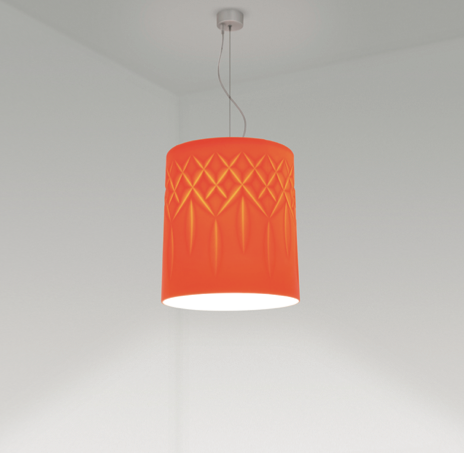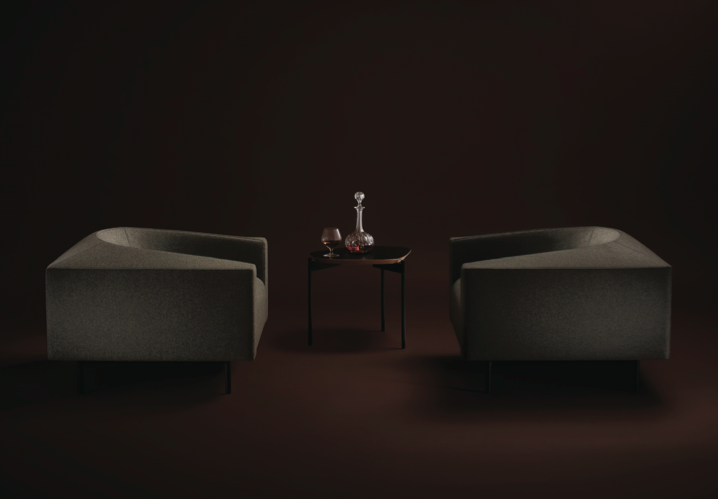
Fine lines: designing furniture with Keith Melbourne
Fine lines: designing furniture with Keith Melbourne
Share
We are all a product of our experiences,” says Melbourne-based designer, Keith Melbourne, whose path to furniture design came via a career in engineering and a childhood “kicking around” in his father’s shed. “As a child I felt my dad could make anything,” Melbourne says, “though aesthetics definitely didn’t come into it,” he adds with a laugh. That childhood notion of anything is possible, combined with an exploration of new materials and technologies, continues to drive one of Australia’s most successful furniture designers and, in turn, the manufacturers with whom he works.
Melbourne’s 14 years working in the aerospace and automotive industries brought him from his home in Yorkshire, England to Perth, where he eventually made the decision to study furniture design. Having developed a number of global patents for computer-controlled engines to aid drivability and reduce emissions, Melbourne was no stranger to the technical side of design, though, as he says, “I instantly found a new world I just loved.” It was a world of new possibilities, of aesthetic outcomes to technical processes and one he describes as “being taught to see for the first time”.
An early inspiration was Oscar Niemeyer’s Serpentine Pavilion (2003) and the Brazilian architect’s ability, in his nineties, to capture the essence of the pavilion in a single sketch. Melbourne comments that his “fascination with line and its relationship to form” is integral to his design process. Like Niemeyer and another early inspiration, architect Frank Gehry, Melbourne’s reputation is built on the ability to realise the results of that search and convert the simple line into a complex manufactured piece.
“I think of my work as an artistic form of engineering,” says Melbourne, with the manufacturing processes behind the work invisible in the pure, sculpted forms that epitomise his work. The Amelia chair (2006), designed for Woodmark, launched Melbourne onto the Australian furniture scene. It is a fine example of Melbourne’s ability to create a striking design while simultaneously solving structural and manufacturing issues. The resulting parabolic form is suggestive of a more complex and costly technique, which is simply not viable for Australian manufacturers. For Melbourne, creating a piece like this is “a case of figuring out what we can and can’t do here and working creatively within those limitations”. An approach that is influenced by his time as an engineer, but also his passion for the industrial process.
“Keith draws on a sophisticated knowledge of materials and manufacturing processes to develop his products,” says Simon Christopher of ISM Objects, having worked with the designer to produce a number of lighting ranges over the past decade. “The results are both surprising and beautiful,” he adds.
Celia Quattrociocchi, formerly of Woodmark and now with Zenith, who has worked with Melbourne on both the Amelia chair and Zenith’s Glass collection, says she has “watched Keith’s design sensibility evolve and mature over the past 10 years… he has the ability to create striking pieces, giving ‘shape’ a whole new meaning, while keeping to, and sometimes extending, the limitations of manufacturing processes”.
This crossover of ideas and the continuation of his style and process, in the relatively small pool of Australian manufacturers continues to draw attention. Referring to his Blue lounge designed for Stylecraft, Melbourne comments, “You would never sell enough pieces in Australia to justify the investment in moulding the foam.” The range launched in 2015 and continues his journey of exploring the way organic forms interact with more rigid structures, though it was a departure from the designer’s usual approach.
“I don’t normally design anything without one part of my brain figuring out how it will be made,” says Melbourne, though in the case of the Blue lounge collection, the form was resolved in isolation – presenting the task of finding a cost-effective way in which to produce the range. The solution, which combines traditional timber frame construction with advanced five-axis CNC machining technology, came through a collaboration with the upholsterers. The advanced machining is used to achieve the precise, curvilinear profiles that form the visual identity of the range. Traditional hand-layering of upholstery materials produces the final form, the finishing touch was to wrap the final layer of fabric over the framework, highlighting the junction of soft and hard lines.
It is trademark Melbourne, who describes himself as something of an anti-maker, with an ongoing search in creating products that belie their origin, while evolving certain themes through his practice. Surrounding himself with scale-models, sketches and materials, Melbourne’s studio is a reflection of the way he generates ideas. “I don’t move forward unless I have that history around me,” he says.
For a designer with such an industrial background, you would expect that the creation and refinement of his finished piece is a result of computer-aided modelling alone. Refreshingly, though, Melbourne regards CAD as a tool, and a non-emotive one at that. “Model-making is crucial for me, as the tactile nature is really important,” he says, admitting there is a 3D printer in his studio somewhere, though he finds little use in the hands-off digital process.
“When I make models, it is physical and time-consuming. It’s like a meditation on the object,” says Melbourne – a surprisingly romantic notion for someone working in such an industrial environment. It is a notion that he says extends to the finished product. “I’ve come to understand that there is just something really emotive about furniture, something that engages people.” Clearly, his work holds that appeal, with an expanding portfolio of pieces in production through a growing list of Australian manufacturers.
Melbourne’s work has also drawn the attention of the replica market, unfortunately, something he sees as unavoidable, with little protection given to Australian designers through current legislation. Like all designers, Melbourne finds the situation frustrating, though he sees that there is currently greater protection in building a brand and developing alliances with distributors and clients, who are interested in an original product.
Having travelled extensively in his previous career the designer holds no great desire to break into the European market, instead focusing on building those alliances locally and furthering the possibilities of the local manufacturing base. “We need to support the little amount of manufacturing we have in this country,” he says, and with an increased level of design content being generated by Melbourne and his fellow locally-based designers, this is becoming more and more of a reality.
“I can’t really describe what I do as work. I get to draw and make models of things and then other people invest their time and energy into bringing them to life. For me, that is a privilege.”
Photography by Haydn Cattach.
This article originally featured in MEZZANINE West, available now on newsstands and online.
You Might also Like


























